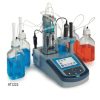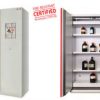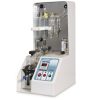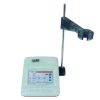TITRALAB AT1000 HACH LANGE:
Reliable results and easy setup.
Organoleptic power
If dosed at the right time (at the end of fermentation), SO2 prevents the oxidation of aromas, helping the fruity taste and eliminating moldy and rotten tastes.
If added too early, you may get the opposite result, i.e. unpleasant aromas (rotten eggs).
Due to its ability to bind to precursors and oxidation products, sulfur dioxide can be used as both a preventive and curative treatment.
For example, an oxidized white wine with a brown tint and a nutty odor can be improved by adding sulfur dioxide, which reduces the dark color and binds with acetaldehyde to decrease the perception of its odor.
Clarifying power
SO2 has a clarifying action, as it promotes the coagulation of the colloidal substances present in the must, thus promoting the precipitation of the lees and thanks to the constant antimicrobial action exerted on the bacterial and fungal load of the fermenting must.
Malolactic fermentation
The addition of SO2 can prevent or stop malolactic fermentation so the addition should be scheduled at the end of this process.
To minimize the time the wine remains uncovered and therefore susceptible to attack by unwanted bacteria, it is important to accelerate this process by inoculation with selected malolactic bacteria.
How is malolactic fermentation followed?
The O.I.V. methods include:
L-Lactic Malic according to the enzymatic method
OIV-MA-AS313-07
L-Malic according to the enzymatic method
OIV-MA-AS313-11
It can be determined with manual or automatic instruments and ready-to-use enzyme kits from the line

Find more information on the page: https://www.exactalabcenter.it/enologia/enzimatiche/
Solvent power (color)
Sulphur dioxide promotes the extraction of certain colouring substances and tannins during the maceration of red grapes, thanks to its solvent action which acts on the skin membrane, increasing the release of colouring substances.
A slight reverse process also occurs, linked to the fact that anthocyanins become more soluble and extractable and form colorless compounds; however, this bond is easily reversible.
In white grapes, SO2 is normally added after separating the solid parts.
It also promotes the extraction of acids and minerals.
In red wines, sulfur dioxide slows down the condensation phenomena of anthocyanins with tannins for the formation of stable colored compounds; it is therefore necessary to use the right quantity to obtain the antiseptic action without compromising the stabilization of the color.











